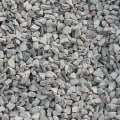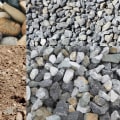Aggregates are inert granular materials such as sand, gravel or crushed stone that, together with water and portland cement, are an essential ingredient in concrete. Email address is required Invalid email address Invalid email address ACI Resource Center Southern California Midwest Page may have been updated, moved or deleted. Also be sure to check the spelling. How do I find the page I wanted? Search the site with our Specific Topics page.
Talk to a customer service representative now to help you find what you are looking for. Use the main navigation at the top of this page to find what you are looking for. Enter this 5-digit unlock code on the website.
aggregate
is a crucial component of concrete.It consists of a wide range of materials such as gravel, sand, slag, crushed stone and even recycled concrete. The material used for the aggregate comes in small parts of various sizes, depending on the project in question. Most contractors will adapt the type of aggregate they choose to the needs of a project. Concrete is a mixture of cementitious material, aggregate and water.
Aggregate is commonly considered inert filler, accounting for 60 to 80 percent of the volume and 70 to 85 percent of the weight of concrete. Although aggregate is considered inert filler, it is a necessary component that defines the thermal and elastic properties of concrete and dimensional stability. Aggregate is classified into two different types, coarse-grained and fine. Coarse-grained aggregate is usually greater than 4.75 mm (retained in a No.
The compressive strength of the aggregate is an important factor in the selection of the aggregate. When determining the strength of normal concrete, most concrete aggregates are several times stronger than the other components of concrete and are therefore not a factor in the strength of normal strength concrete. Lightweight aggregate concrete can be more influenced by the compressive strength of aggregates. Although aggregates are known to be inert fillers in concrete, the different properties of the aggregate have a major impact on the strength, durability, workability and economy of concrete.
Cement is necessary, but strength can still be preserved when using well-graded aggregates that cost significantly less. Concrete is more workable when a smooth, rounded aggregate is used instead of a rough, angular, or elongated aggregate. The most common classification of aggregates based on specific gravity in bulk is light, normal weight and heavy weight aggregates. To achieve a good concrete mix, the aggregate chosen must be hard, clean particles, free of clay coatings and absorbed chemicals.
The right added ratios will ensure that your work is a success and that the final product lasts for many years to come. This is a summary of the most important factors to consider when selecting and dosing concrete aggregate. Using larger coarse-grated aggregates generally reduces the cost of a concrete mix by reducing requirements for cement, the most expensive ingredient. A smooth surface can improve workability, but a rougher surface results in a stronger bond between the paste and the aggregate, creating greater strength.
OD monitors the moisture content of coarse-grained and fine aggregates on a regular basis to promote consistency and uniformity from batch to batch. Both gravel and crushed stone are generally acceptable for manufacturing quality concrete (Photo, although gravel is generally preferred for exposed aggregate). Aggregates must be solid, clean, hard, durable and free of excessive fines or contaminants that could affect cement hydration or disrupt the paste-aggregate bond. As a natural material, the aggregate will sometimes include worn or unstable particles in the supplied product.
The ratios between coarse-grained and fine aggregates will change depending on the unique characteristics of each aggregate, the method of placement and the desired finish. The fundamental relationship between the water-cement ratio and strength begins with the correction of the contribution or absorption of moisture by aggregates. Each region has its own deficiencies in aggregates, but once a combined aggregate gradation is plotted (percent withheld vs. .
.



Leave Reply